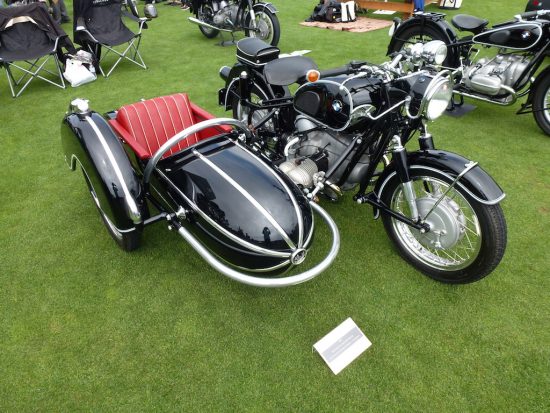Riding a motorcycle is one of the most freeing things in the world! It’s a hobby, a lifestyle, an exercise activity, and, for some, it is therapy. But with great power and freedom comes great responsibility: the responsibility to keep the roads safe.
According to the Arizona Department of Transportation, bikers are well-represented in accident statistics. Around 17 percent of fatal accidents are motorcycle-related. And this is despite motorcycles being a small dot in the large pool of vehicles. That power doesn’t look so enticing anymore, now, does it?
You need to know the laws if you own a motorcycle. Understanding them is not just about avoiding tickets, but staying alive.
This article will help you understand the laws, covering everything from lane‑positioning rules to DUI limits, so that you can focus on the wind in your face instead of a court date.
Lane Splitting and Lane Filtering
There’s a problem that always pops up whose answer still confuses people, which is Lane Splitting vs. Lane Filtering.
Both often get lumped together, but they are very different riding maneuvers. When you split a lane with your bike, you’re riding between two lanes of slow-moving traffic, but at your regular speed (or above the speed limit). When you filter a lane, it means you drive through lanes at a slow speed to escape the jam.
In some states, either one can get you in trouble. You can be charged with “improper passing”. Enforcement differs in each precinct, but wouldn’t you rather not risk it?
Helmet Laws and Protective Gear Requirements
Helmet and protective gear laws are the most obvious for bikers.
Nobody should be telling you, as a biker, to gear up properly. Motorcycle owners use their gear as a fashion statement. Fashionable helmets, stylish jackets, and epic-looking rider boots can get you the admiring stares that even a flashy supercar won’t get you.
All passengers under 18 must wear a Department of Transportation-approved helmet. If you’re 18 and older, the rules are slightly relaxed. Still, never leave home without it, because it can save your life.
However, nothing in the state laws mandates jackets and boots. Your precinct, however, is a different case. Know where you live before you ride.
Speed Limits, Lane Discipline, and Signaling
The temptation to rev up that powerful engine and go flying is always calling! But don’t give in. Fight that temptation as hard as you can. In some states, like Arizona, speed limit laws are harsh for motorcyclists.
On urban streets, the maximum speed allowed is 25-35mph. On rural highways, 55-65mph is allowed. On interstates, the maximum speed allowed is 75mph. Always obey these limits for your safety. Excess speed is the leading cause of rider fatalities.
Always ensure that you try to maintain your lane position. Don’t be tempted to maneuver, especially during heavy traffic. Staying in your lane makes you visible to cars, so if there is a collision, you can have a say in court and for insurance claims.
And finally, signaling. As a biker, you also have the luxury of using your hand to signal. Always do this at every chance that you get to do it, in addition to using your turn signals.
Impaired Riding: DUI Laws for Motorcyclists
The worst kind of DUI to be charged with is a motorcycle DUI. What makes it the worst kind is that you’re more likely to cause the end of a life while riding a bike under the influence.
Casualties aside, your judgment will be called into question. Unlike cars, motorcycles have no cages; hence, they cause more fatal accidents than cars. Riding a motorcycle under the influence is like walking on a tightrope with a bottomless ditch right beneath you while drunk. This analogy should be enough to prove to you that DUI motorcycle offenses should not be on your record.
Also, aggravating factors can increase your penalties. Factors such as accident involvement with injury, high BAC readings (0.15 percent and above), or prior DUI convictions.
Insurance and Financial Responsibility
Insurance is required for motorcycle owners. The minimums are:
- $15,000 bodily injury per person
- $30,000 bodily injury per accident
- $10,000 property damage
If an officer nabs you riding without insurance, you can get a ticket and have your license suspended for up to six months.
Best Practices for Motorcycle Owners
There are some grey areas in motorcycle laws. Many unnecessary court dates have happened, and many fates have been sealed as a result. Some of them include speeding, improper passing, or helmet non-compliance for riders under 18.
Penalties for these range from $150 to $500, and the rider gets docked three license points.
The points below can help you deal with these legal problems:
- SMIDSY awareness (“Sorry, Mate, I Didn’t See You”): Ride as if the cars can’t see you, and plan your exit routes from lanes.
- Keep at least a two-second gap ahead and a one-second buffer behind if you’re in traffic.
- When riding with your hobby group and you encounter traffic, the “Stagger formation” is best. It keeps everyone visible and can signal lane changes well in advance for cars following behind.
- Proper Maintenance and Pre‑ride Checklist: Always maintain your bikes to ensure that they perform optimally. Then, before you ride, check your tires, lights, brakes, and oil levels. If it’s not roadworthy, stay at home.
With great power and freedom comes great responsibility. Don’t ride like you own the road, but like you’re passing through at all times. Knowing your rights can help you avoid unnecessary run-ins with the law. And if you ever find yourself entangled with the law, call your attorney.
Stay safe, and happy riding!



Speak Your Mind